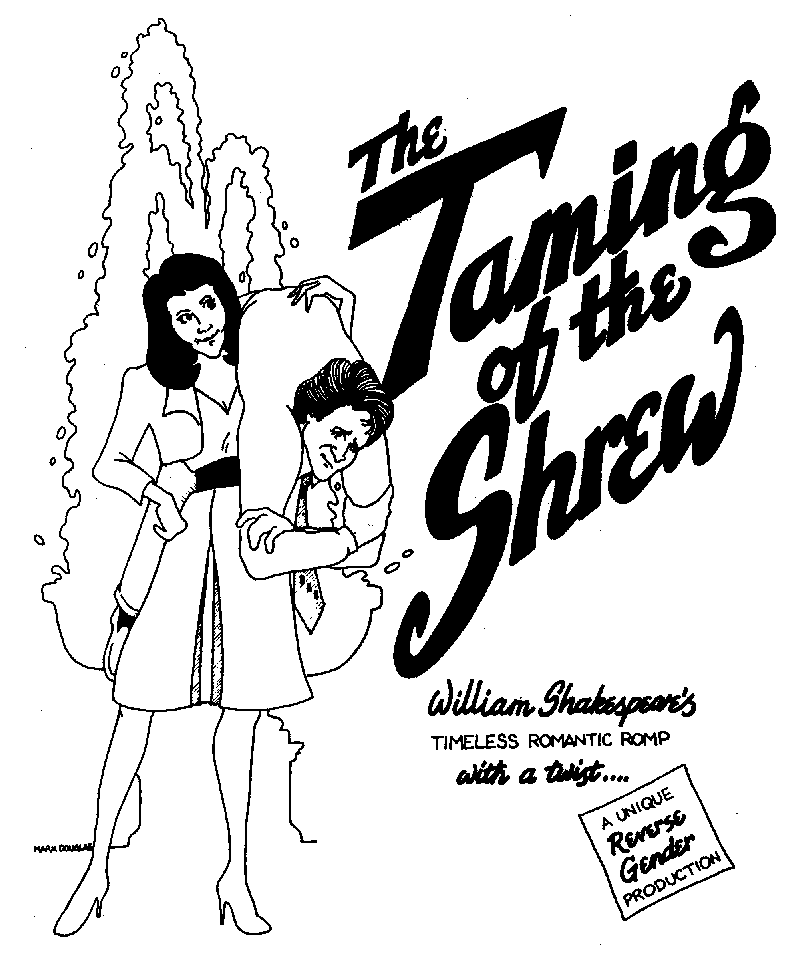

Presented in May and June 1989 at the Village Theatre on 22nd Street, Shrew was presented with the usual male roles played by women and the female by men. I had originally concieved the production as a staged reading in the spring of 1988 with the Rogue Readers. Set loosely in the 1950's, the set featured three revolving triptichs which turned to reveal different locations and featured music by Cole Porter performed by Ella Fitzgerald.
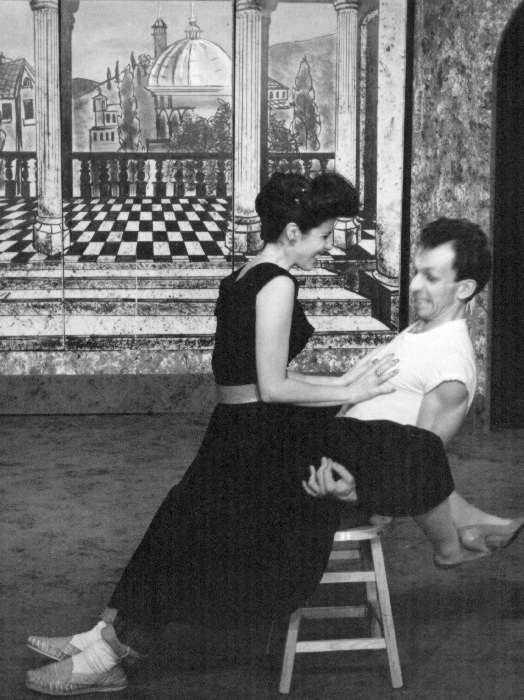
Denise Dalfo as Petrucia and Tim Zay as Katrino
A very nice review:
SHAKESPEARE BULLETIN - 15
JULY/AUGUST 1989 by Susan Savitsky Imagine, if you will, a world in which
only women are leaders in commerce and where prestige, wealth, and power are passed along
through a matriarchal network. This is the world in Shakespeare's The Taming of the Shrew
as produced by the Quinapalus Theatre Company. |
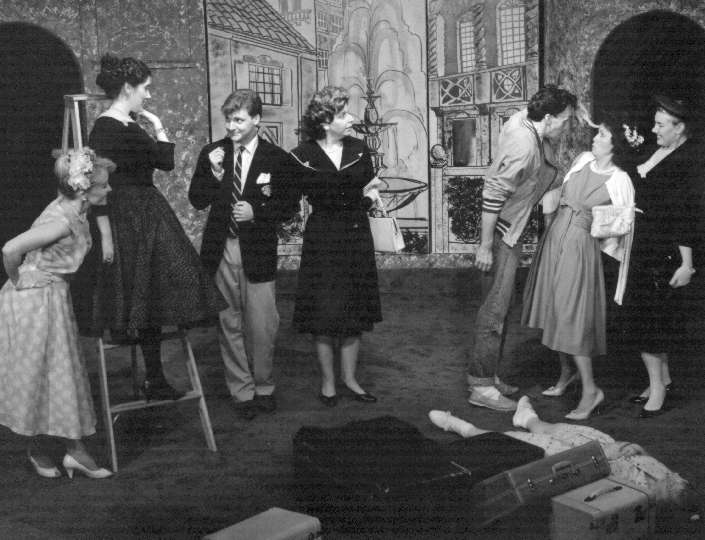
(left to right) Susan McBrien as Trania, Kay Rothman as Lucentia, John Touhey as Bianco, Bonnie Kalisher as Baptista Minola, Tim Zay as Katrino, Patricia Denny as Hortensia, Laura Gillis as Gremia and Janet Rust (on the floor) as Biondella
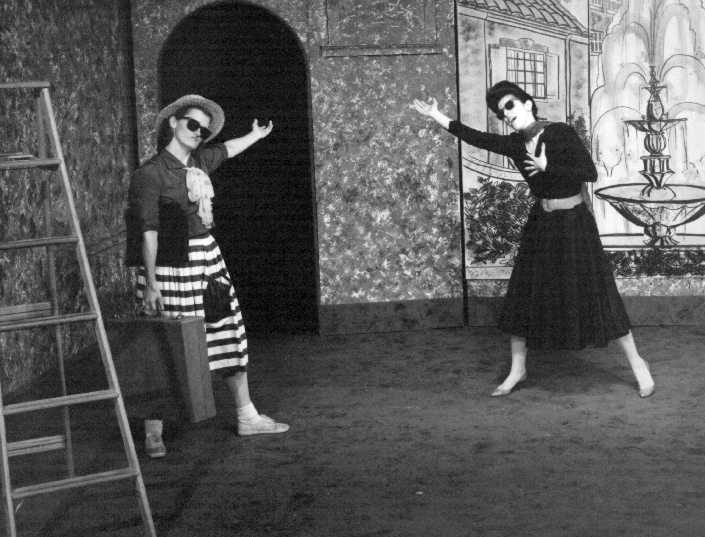
Kathleen Brant as Grumia and Denise Dalfo as Petruchia
Janet Rust and Kay Rothman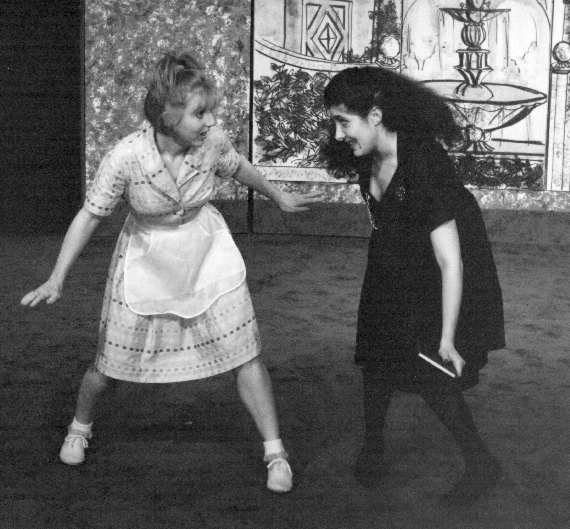
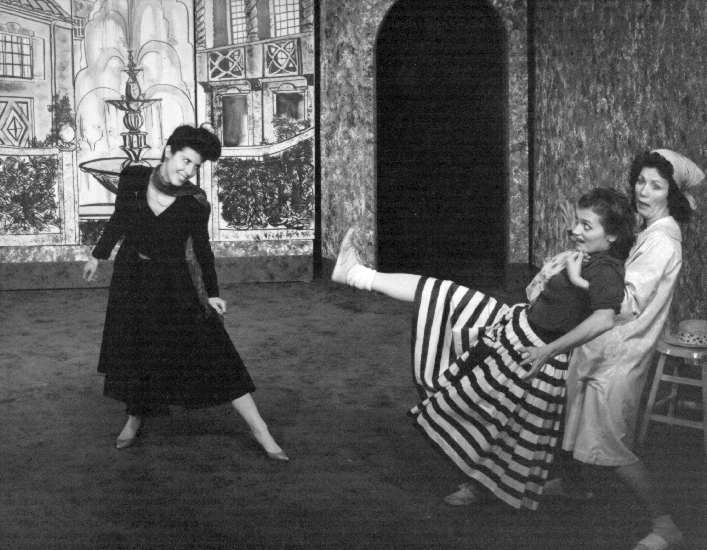
Denise Dalfo, Kathleen Brant, and Patricia Denny
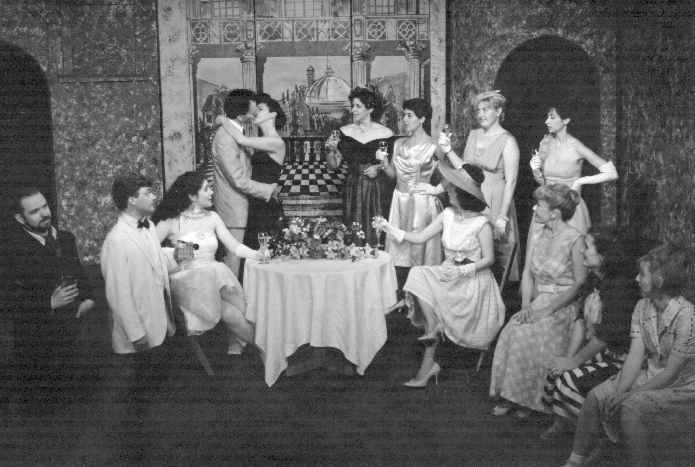
John Moss, John Touhey, Kay Rothman, Tim Zay, Denise Dalfo, Bonnie Kalisher, Denni Lee Heiges, Patricia Denny, Laura Gillis, Pier Lisa, Susan McBrien, Kathleen Brant, Janet Rust
CAST AND CREW
| Director | Tony Rust |
| Assistant Director | Thomas Rice |
| Stage Manager | Gina Andreoli |
| Lighting Designer/ Scenic Coordinator | Peter R. Feuche |
| Technical Director | Anthony Ferrer |
| Costume Coordinator/ Set Decorations | Douglas Hout |
| Electrics Crew | Ali Sherwin |
| Katrino | Tim Zay |
| Petruchia | Denise Dalfo |
| Bianco | John Touhey |
| Lucentia | Kay Rothman |
| Gremia | Laura Gillis |
| Hortensia | Patricia Denny |
| Trania | Susan McBrien |
| Grumia | Kathleen Brant |
| Baptista Minola | Bonnie Kalisher |
| Curtis, Tailor, Widower | John Moss |
| Biondella | Janet Rust |
| Vincentia | Denni Lee Heiges |
| A Pedant of Mantua | Pier Lisa |
Back to QUINAPALUS THEATRE COMPANY's Home Page or on to the next show, THREE MEN ON A HORSE